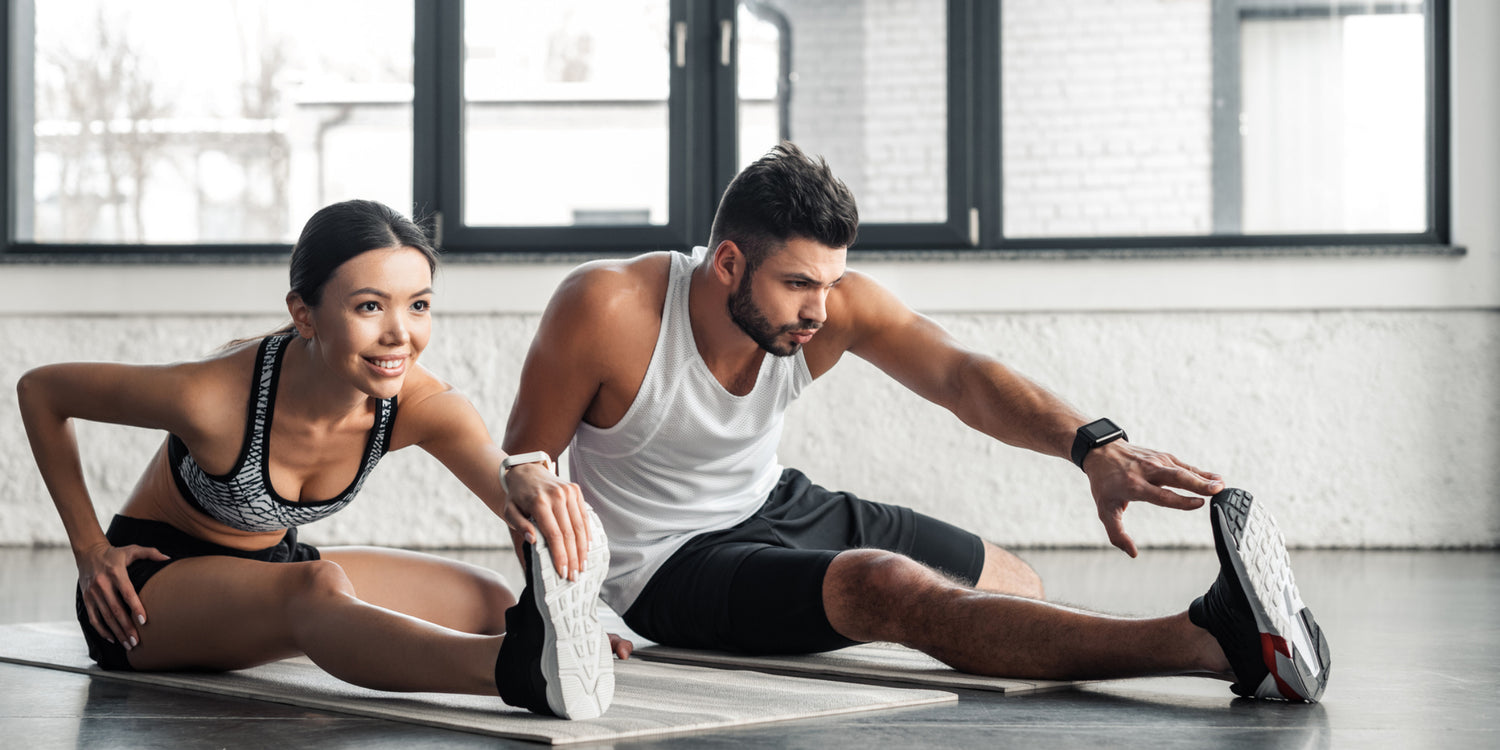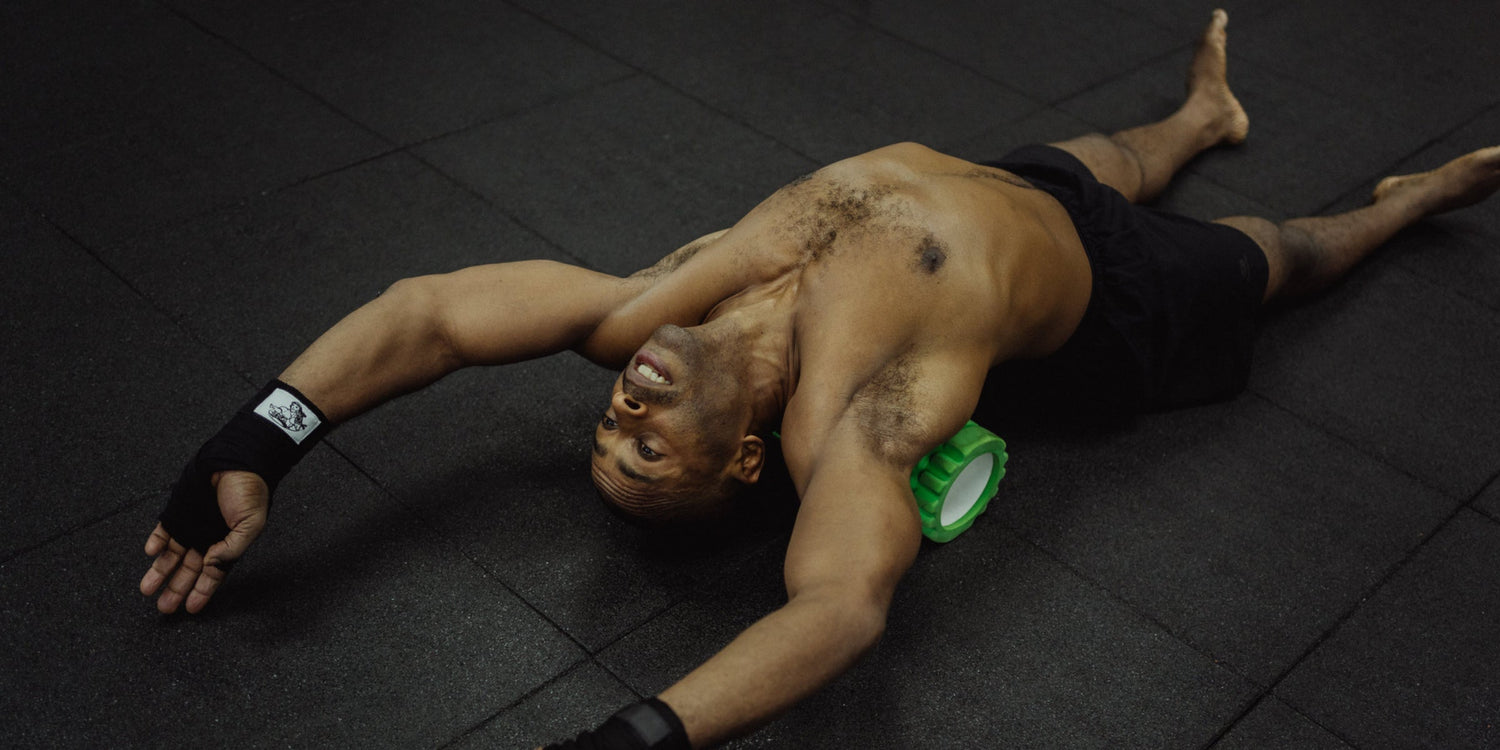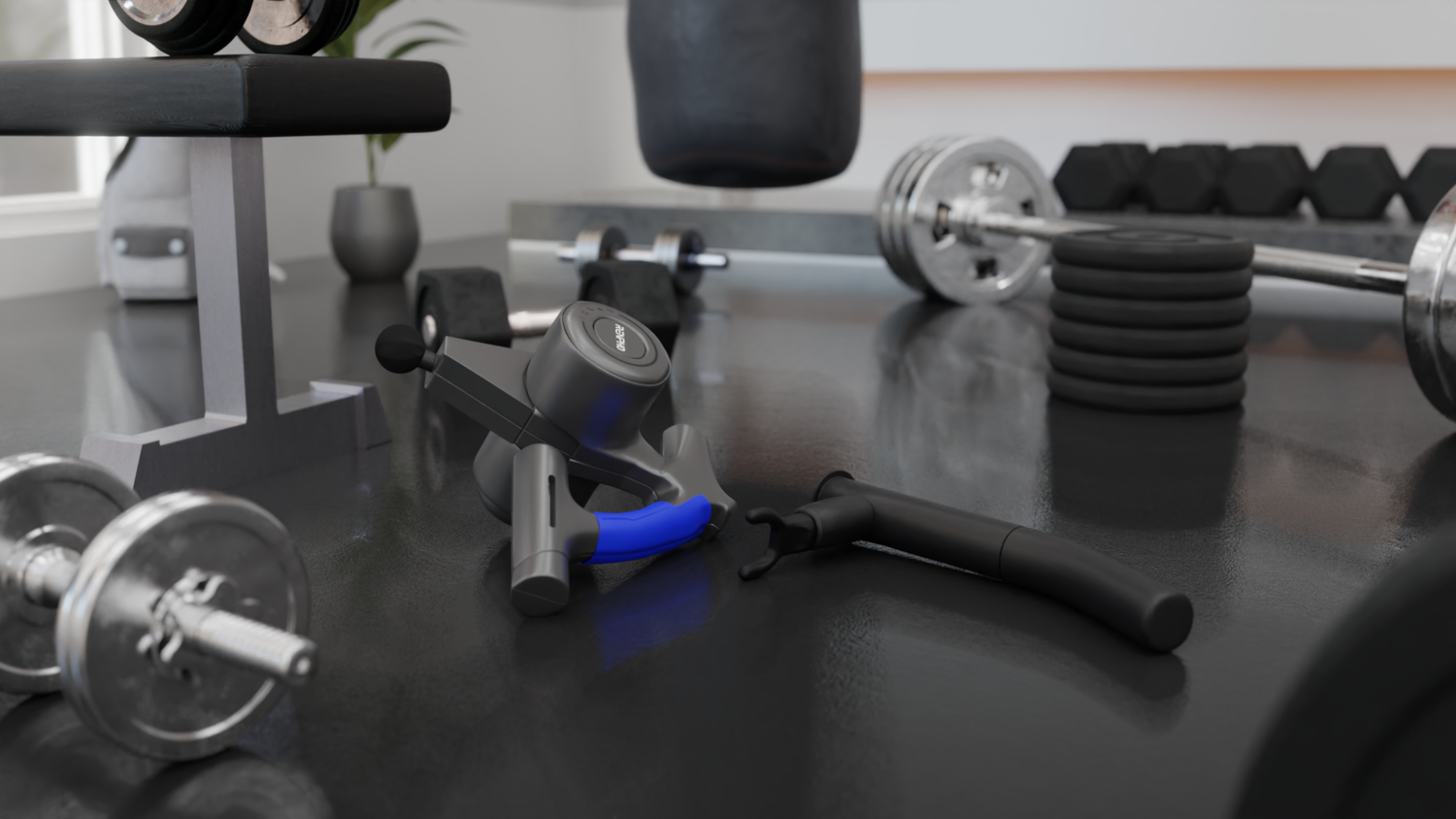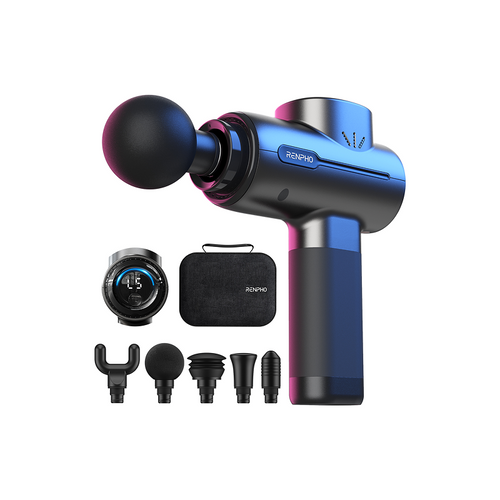Massage Gun vs Stretching: Which is More Effective for Muscle Recovery?

Stay tuned to our latest news
Muscle recovery holds a pivotal role in every fitness routine or physical activity. It helps alleviate soreness, improve flexibility, and enhance overall performance. Traditionally, methods like stretching have long been one of the go-to methods for muscle recovery. However, the rise in popularity of massage guns in recent years has sparked a debate about their effectiveness in comparison to stretching.
Whether you're an athlete, fitness enthusiast, or someone seeking relief from muscle tension, understanding the pros and cons of massage guns and stretching can help you make informed decisions about your recovery routine. So, let's find out which method is more effective for muscle recovery and determine which one reigns supreme.
What is a Massage Gun? What are Its Common Features?

A massage gun, a handheld device designed for deep tissue massage and muscle recovery, is equipped with a powerful motor delivering rapid, targeted pulses of pressure to the muscle tissues. This aids in relieving tension, improving blood circulation, and reducing stiffness and soreness.
These devices are commonly used by athletes, physical therapists, and fitness enthusiasts as a convenient and effective tool for improving muscle recovery and overall mobility. Moreover, they come with useful features that make them a versatile and practical option for anyone looking to enhance their recovery routine and maintain healthy muscle function.
1. Percussive Therapy
Percussive therapy is a prominent feature in massage guns, offering a deep-tissue massage experience through rapid and concentrated pressure pulses. These devices utilize a motorized head that generates high-frequency vibrations, allowing for the penetration of deep muscle layers. With adjustable intensity settings, users can customize their massage to suit their needs, whether gentle relaxation or targeted muscle relief. Moreover, massage attachments enable precise targeting of specific muscle groups or body areas and can help alleviate muscle soreness, reduce stiffness, improve flexibility, promote muscle recovery, and induce relaxation. However, it's important to exercise caution, follow safety guidelines, and consult a healthcare professional when needed. Remember that massage guns should not replace professional medical advice or treatment.
2. Adjustable Speeds
Massage guns offer different speed levels to allow users to further customize their massage experience and to cater to different muscle groups. When targeting sore or tender muscles, it is recommended to start with a gentle speed to avoid further discomfort. This will help to relax the muscles and reduce soreness. As the muscles start to loosen up, gradually increase the speed to target deeper knots and tension. This increase in intensity can help to break down tight muscle fibers and promote better blood circulation to aid in recovery.
By tailoring the massage experience to the specific needs of different muscle groups and personal preferences, recovery time can be optimized. The adjustable speeds feature allows for a more targeted and effective treatment, whether it's for relieving general muscle soreness or targeting specific areas of tension. This approach can help to enhance the overall massage experience and maximize recovery benefits, leading to improved muscle mobility and reduced discomfort. Remember that when using adjustable speeds, it's important to listen to your body's feedback and adjust accordingly to ensure a safe and effective massage experience.
3. Interchangeable Heads
Most massage guns come with different interchangeable heads to cater to specific muscle needs and massage intensities. Each head is designed for a different purpose, such as targeting specific muscle groups, providing a deep tissue massage, or offering a lighter rub.
For example, the RENPHO Active Massage Gun have 5 different massage heads: bullet head, flat head, air cushion head, ball head, and u-head.
Bullet head: Suitable for joints, deep tissue, trigger points, meridians, palms, and soles
Flat head: Suitable for all parts of the body
Air Cushion head: Suitable for sensitive muscles
Ball head: Suitable for large muscle groups
U-Head: Suitable for neck, spine, Achilles Tendon
Remember to always follow the manufacturer's instructions and guidelines when using interchangeable heads and adjusting the massage gun for different types of massages.
4. Portability
Perhaps one of the most appealing aspects of a massage gun is its portability, allowing for easy transportation and on-the-go muscle relief. This makes it an ideal tool for those who are always on the move. The compact size and lightweight design of massage guns make them convenient for travel, allowing users to bring them to the gym, office, or even on vacation, without the need for bulky equipment.
5. Ergonomic Design
In addition to their portability, massage guns are specifically designed with ergonomic comfort in mind, ensuring a more comfortable and effective massage experience. Their handle is designed to fit comfortably in the hand, reducing hand strain and allowing for prolonged usage without discomfort. Furthermore, their grip is also non-slip, providing a secure and stable hold during use.
Their design of the massage gun reduces hand strain by evenly distributing the weight of the device and providing a cushioned grip to minimize pressure on the hand and wrist. This allows for a more comfortable massage experience for both the user and the person receiving the massage.
Additionally, their design allows for easy targeting of hard-to-reach spots, such as the upper back and shoulders, without straining the hand or arm. The lightweight and compact design of the massage gun makes it easy to maneuver and reach areas that may be difficult to access with traditional massage methods.
Pros and Cons of Using a Massage Gun for Muscle Recovery
Massage guns for muscle recovery have several benefits. For starters, they can target specific areas for relief, deliver fast results, and are portable and convenient for use at home or on the go. The percussive therapy they provide can help increase blood flow, loosen tight muscles, and reduce muscle soreness.
However, there are some potential risks and downsides to consider. The cost of a massage gun can be a barrier for some individuals. Next, applying too much pressure or using a massage gun at high-intensity levels can cause discomfort, bruising, or even tissue damage. Lastly, there is also a risk of aggravating existing injuries if the massage gun is used improperly or with too much pressure.
What is Stretching? What are Its Benefits?

On the other hand, stretching is a fundamental component of physical fitness that involves extending the muscles and tendons to improve flexibility and range of motion. This practice helps to prevent injury, reduce muscle tension, and improve overall physical performance. The benefits of stretching also include increasing blood flow to the muscles, promoting relaxation, and enhancing posture. Incorporating a regular stretching routine into your exercise regimen can greatly improve your flexibility and overall health.
1. Boosts Flexibility and Movement
Stretching is essential for improving flexibility and boosting overall movement. By regularly stretching, the muscles become more flexible, improving the body's range of motion and allowing for smoother movements. This also helps to prevent injury by allowing the muscles to adapt more easily to sudden movements or shifts in direction.
Moreover, it also assists in lengthening and balancing the muscles around the joints, alleviating any existing postural issues by strengthening and lengthening the muscles that may be contributing to poor posture. When the muscles are balanced and flexible, the body is better able to maintain proper alignment, reducing the risk of strain or discomfort.
2. Eases Muscle Stiffness
Stretching is also useful for easing muscle stiffness and improving flexibility. By increasing blood flow to the muscles, it can help with relaxation and stiffness. If done regularly, it enhances muscle flexibility and joint range of motion while improving tissue elasticity. Additionally, it incorporates relaxation techniques that help reduce stress and tension in the body. It also promotes muscle coordination and balance, aiding in optimal movement. To avoid injuries, it is important to practice safe stretching techniques, holding each stretch for 15 to 30 seconds and avoiding bouncing or jerking movements.
3. Improves Posture
As mentioned briefly before, stretching plays a crucial role in improving posture by lengthening and balancing muscles, which in turn results in better alignment of the body. When we stretch, we help to increase the flexibility of our muscles, allowing them to adapt and elongate, which can prevent them from becoming tight and shortened. This balance in muscle length contributes to a more even distribution of tension throughout the body, ultimately leading to a more upright and aligned posture.
Regular stretching can guide the body to a better stance by relaxing tight muscles that may be pulling the body into a slouched or hunched position. By incorporating stretching into a daily routine, individuals can work towards reversing the effects of prolonged sitting, standing, or poor posture habits. This can lead to a straighter back and reduced slouching, as the muscles become more evenly toned and flexible.
4. Enhances Blood Circulation
Next, stretching your body regularly also contributes to improved blood circulation throughout the body. By dilating your blood vessels, stretching allows for increased blood flow as the muscles surrounding them relax and widen. This expansion enhances the capacity of arteries and capillaries to deliver oxygen-rich blood to the muscles and organs. Additionally, it slightly raises the heart rate, leading to more efficient pumping of blood throughout the body. The stimulation of the lymphatic system during stretching helps facilitate the circulation of lymph fluid, which carries immune cells and aids in waste removal. By relieving muscle tension and promoting muscular relaxation, stretching allows for better blood flow and the efficient delivery of oxygen and nutrients to the muscles. Incorporating regular stretching into your routine can contribute to overall cardiovascular health and improved blood circulation. However, it's important to remember that stretching should be complemented by other cardiovascular exercises and a healthy lifestyle for optimal results.
5. Relieves Stress
Lastly, stretching can be a highly effective way to relieve stress and promote overall well-being. When we are stressed, our bodies tend to hold onto tension, leading to stiffness and discomfort. By incorporating stretching into our daily routine, we can release this physical tension, which in turn helps to reduce mental stress.
The act of stretching helps to loosen tight muscles and improve circulation, allowing for better blood flow to the brain. This can result in a decrease in stress hormones and the promotion of a sense of calmness. Additionally, the physical release of tension through stretching can have a positive impact on mental well-being by reducing feelings of anxiety and promoting a more positive outlook.
The benefits of stretching for stress relief are numerous. Not only does it improve flexibility and reduce the risk of injury, but it also contributes to an overall sense of relaxation. By making stretching a regular part of your routine, you can experience increased feelings of calmness and tranquility, as well as improved mental clarity. Incorporating stretching into your daily life can be a simple yet powerful tool for managing stress and promoting a sense of well-being.
Pros and Cons of Stretching for Muscle Recovery
Stretching is a crucial aspect of muscle recovery as it helps to gradually lengthen and relax muscle fibers, reducing tightness and discomfort. Regular stretching promotes increased blood flow, expediting the removal of waste products and enhancing the healing process. Furthermore, stretching can improve flexibility and range of motion, which can be beneficial for overall muscle and joint health.
Despite its benefits, there are potential drawbacks to stretching for muscle recovery. One risk is overstretching, which can cause further injury and delay the healing process. It is important to approach stretching with caution and avoid forcing the muscles beyond their limits. Additionally, stretching may not be suitable for all types of injuries, and inappropriate stretching can worsen the condition. It is important to seek professional guidance and listen to the body's signals when incorporating stretching into a muscle recovery routine.
Should I Stretch or Use a Massage Gun?
When it comes to whether you should stretch or use a massage gun, the short answer is both. By combining stretching and a massage gun use, you can unlock a range of benefits. Stretching helps improve flexibility by elongating the muscles and increasing their range of motion. This can lead to better muscle function and decreased risk of injury. On the other hand, a massage gun can help relieve muscle tension by targeting specific areas with rapid pulses, promoting blood flow and reducing muscle soreness. This dual approach accelerates overall performance, promoting quicker recovery and reducing the risk of overuse injuries.
To maximize the benefits of both stretching and a massage gun, seamlessly incorporate them into both your pre- and post-workout routine. Before your workout, start with dynamic stretching to prepare your muscles for movement, followed by targeted massage gun use to release any tension. After your workout, a combination of static stretching and further use of the massage gun can help reduce muscle soreness and improve flexibility, allowing for better recovery and improved performance in future workouts. By incorporating both stretching and a massage gun, you can achieve the best results in terms of flexibility, muscle tension relief, and overall workout performance.
Takeaway
After a tiring workout or a long day at work, our muscles can either get sore or stiff. This results in the process of muscle recovery kicking in. Choosing between the traditional stretching exercises or using a massage gun has its pros and cons. However, utilizing both methods gives you the best of both worlds.
Therefore, the next time you need some help dealing with tight muscles or onset muscle soreness, a combination of stretching and massage gun can help your body recover faster.
Renpho Health Tips
-

How Restorative Yoga and Stretching Can Help You Relax and Recover
December 10, 2023
Read more >
-

How Stretching Can Enhance Your Workout Performance and Recovery
November 6, 2023
Read more >
-

Muscle Soreness? The Power of Foam Rolling and Self-Myofascial Release
December 13, 2023
Read more >
-

Why Massage Guns Can Help Relieve Post-Workout Muscle Soreness?
November 30, 2023
Read more >
-

Do RENPHO Massage Guns Work for Knots?
November 13, 2023
Read more >





